Article's Content
Typically, it’s the tech segments positioned in the flow of capital, whether from customers, investors, or venture capitalists, that see the most innovation. In my mind, it’s a simple equation: more money = more development. That’s why I was shocked to see that the SaaS segment most directly tied to money, FinTech, is still lagging behind.
For an industry centered around managing ungodly sums of money, the financial service sector still relies on surprisingly arcane processes in most regions of the world. There are many different methods of moving money between individuals, companies, organizations, and financial institutions — some of which have been around for over 50 years. These methods, also called payment rails, include everything from credit and debit card transactions to ACH payments, wire transfers, and SWIFT payments.
Bessemer Venture Partners recently illustrated the piecemeal nature of the American payments landscape with a blog post that features this graphic:
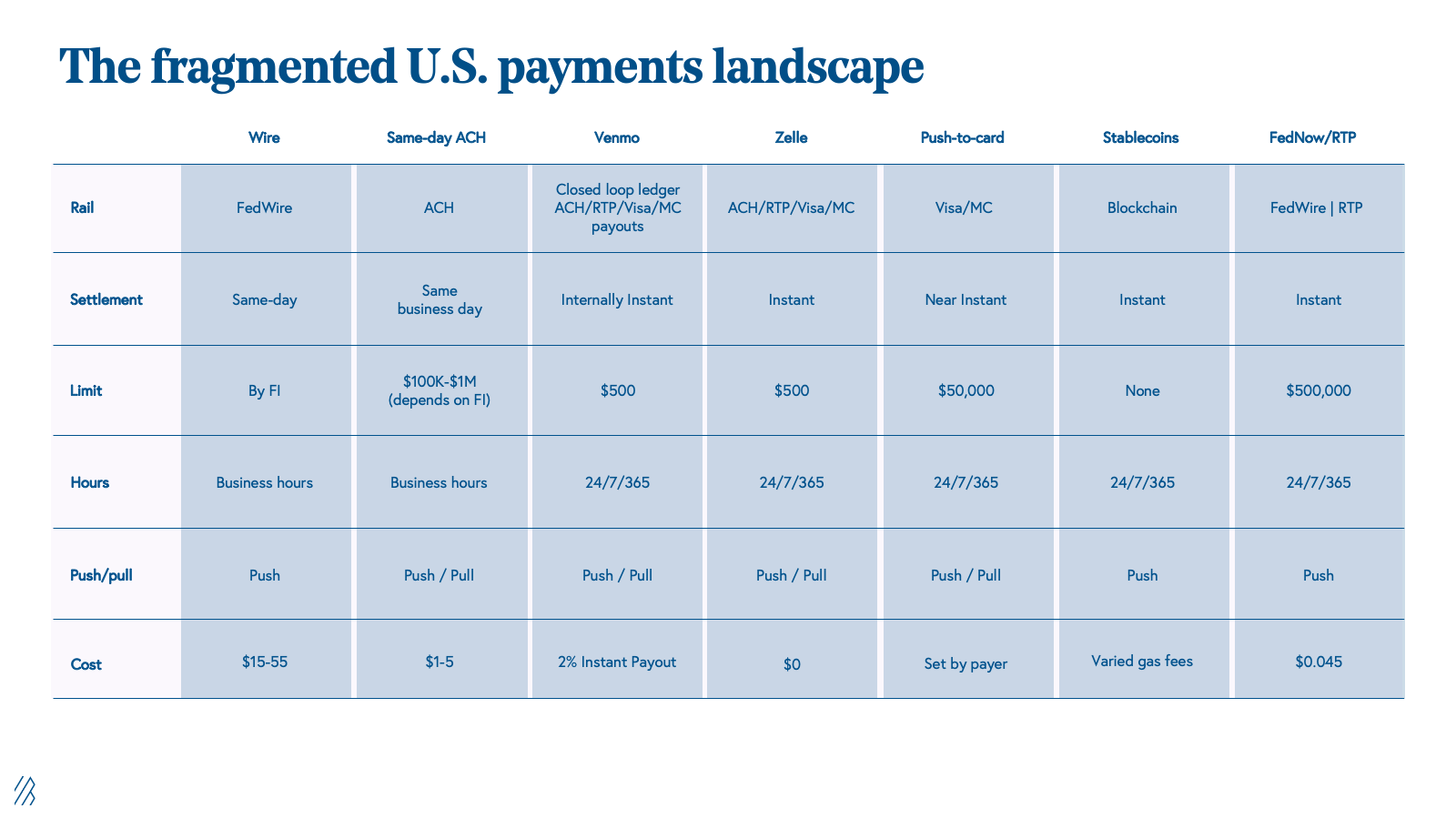
Image source: https://www.bvp.com/atlas/how-fednow-and-faster-payments-will-impact-u-s-fintech
On the rightmost column of the graphic, you’ll see the latest payment rail iterations: Real-Time Payments (RTP) and FedNow. The former is gaining traction, currently being used by Bank of America, Citibank, JPMorgan Chase, and others. The Federal Reserve is rolling out the latter in July 2023.
Newer technology means new opportunities and, most importantly, new companies.
Modern Treasury is one such company looking to take advantage of the coming disruptions. Founded in 2018, the company has raised over $180 million in total funding to usher in a new era of payment operations. The software brand offers a suite of tools and APIs to automate the full cycle of money movement— from payment initiation to approvals, reconciliation, and real-time financial data tracking.
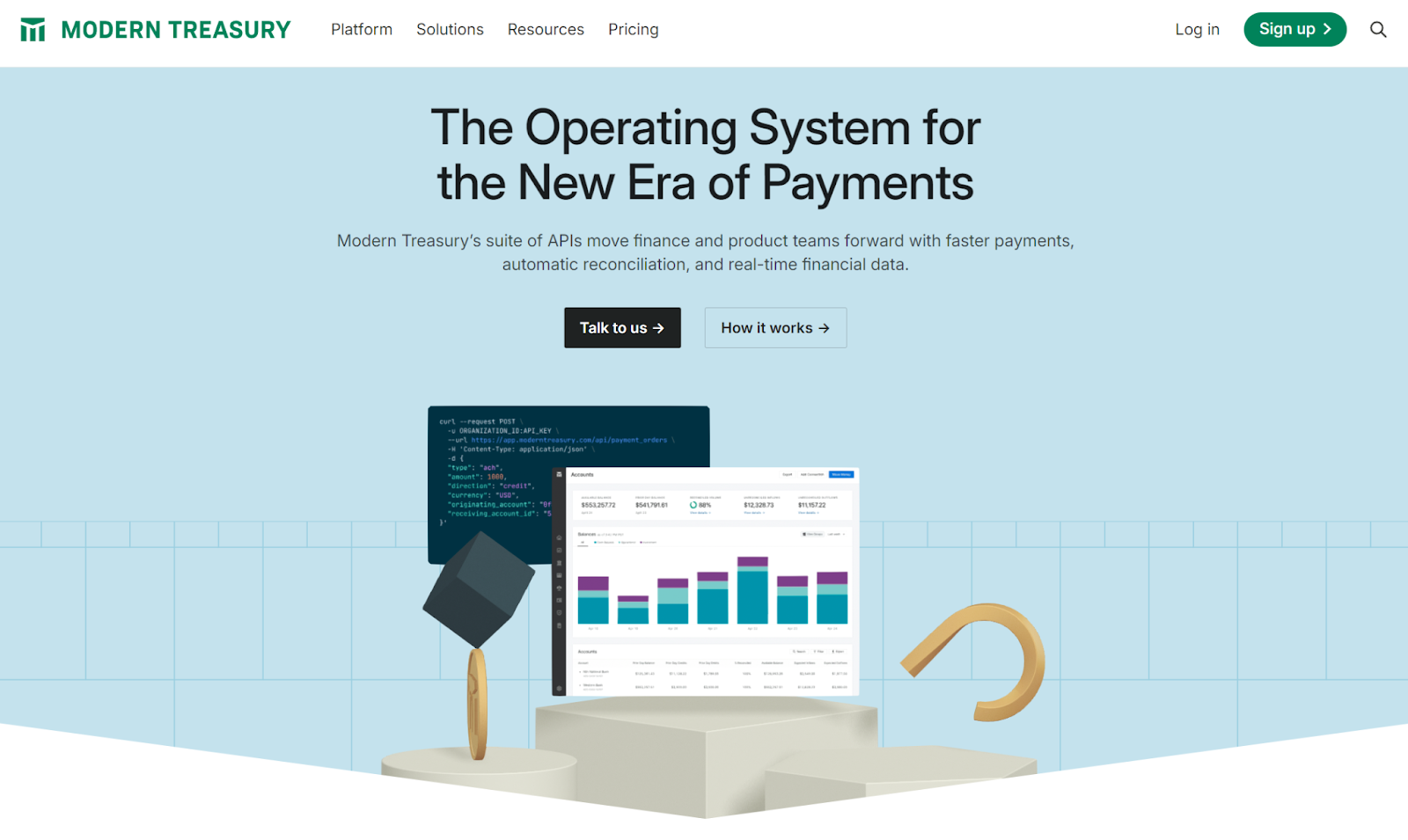
Today we’ll look at how this growing FinTech brand is carving out its space in the instant payments niche with a simple, yet powerful approach: blog content.
The New Era of Instant Payments — RTP, FedNow, and Modern Treasury
“New Era” isn’t entirely accurate: countries like India and Brazil have been using instant payment technology successfully for years. The mobile-first nature of these countries, alongside other factors, has made it easier for people to adopt rails like UPI in India and PIX in Brazil. Essentially, these markets were less entrenched in old-school systems like ACH, so people were more comfortable with the early adoption of RTP because it made the payment process easier.
It’s taken Western markets longer to get there, but the launch of FedNow in the US, not to mention the spike in search volume for the term, signals that the industry is preparing for a change. At around 57K monthly searches, online interest in FedNow has increased 10x since last year.

Clearly, the interest is there. Now the question is: how many large institutions will be part of the first wave?
Remember, cryptocurrencies and blockchain made similar promises in the 2010s, and that hasn’t exactly benefited the majority of individual consumers, companies, or governments. The CoinDesk Market Index shows that the crypto market is down 69% since its peak in November of 2021 and is far too unstable to support normal financial transactions.
Markets like North America and Europe, with entrenched financial protocols and strong institutional muscle memory, need convincing: They need someone to define this new payment rail in a way that speaks to their unique needs.
How Modern Treasury Defines a $28B SaaS Category
By offering a range of APIs to assist companies with key financial functions like receiving, sending, and reconciling payments, Modern Treasury is prepared to capitalize on an instant payments market currently valued at $28 billion. All they need to do is educate the market about their product and bring in the large-scale clients they need to succeed long-term.
What’s the best way to educate potential customers about a complex industry, build trust with them, and cement your product’s place within that space? Long-form content.
Looking at Modern Treasury’s marketing channel distribution, we see that’s exactly what’s paying off for the company — with nearly half of its web traffic coming via organic search.
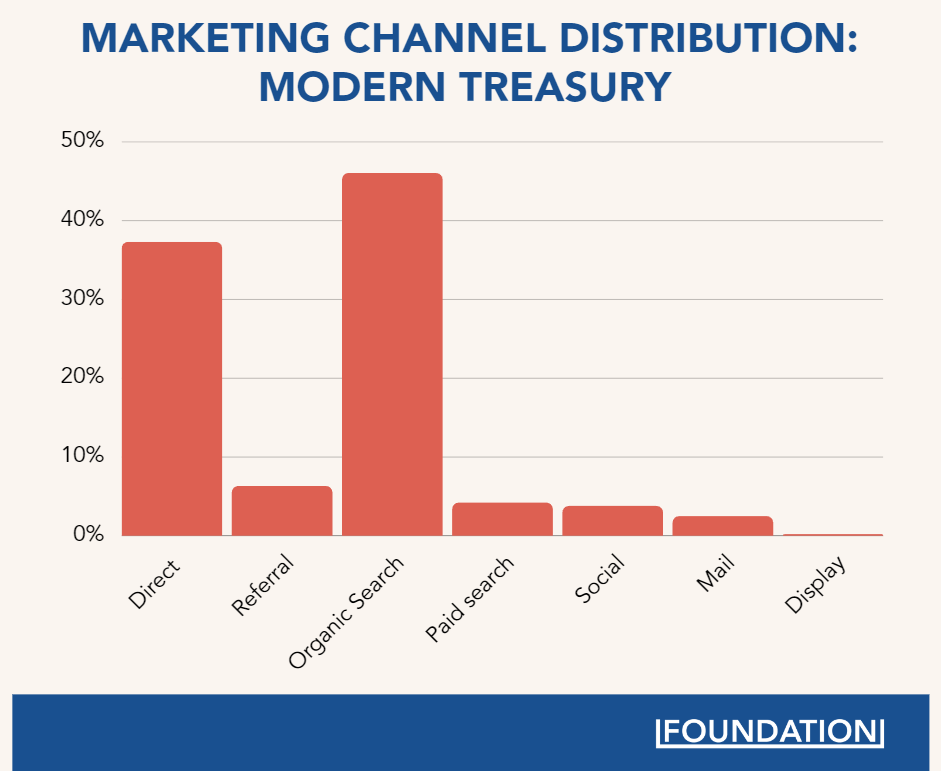
The availability of marketing channels and tactics is both a blessing and a curse. For every company that successfully uses a blended strategy, there are countless examples of brands that throw money at social “campaigns” or paid ads without full rationale. It’s just not worth it.
For a better look at a targeted approach, let’s dive deeper into Modern Treasury’s long-form content strategy, looking at how it captures traffic and online real estate with top-of-funnel blog content.
Keeping it Simple with Glossary-Style Blog Content
Before we dive into the specifics of Modern Treasury’s content marketing strategy, let’s take a quick high-level look at its organic performance. According to Ahrefs, the payment ops brand brings in just over 42K organic visits a month at a value of $58.3K.
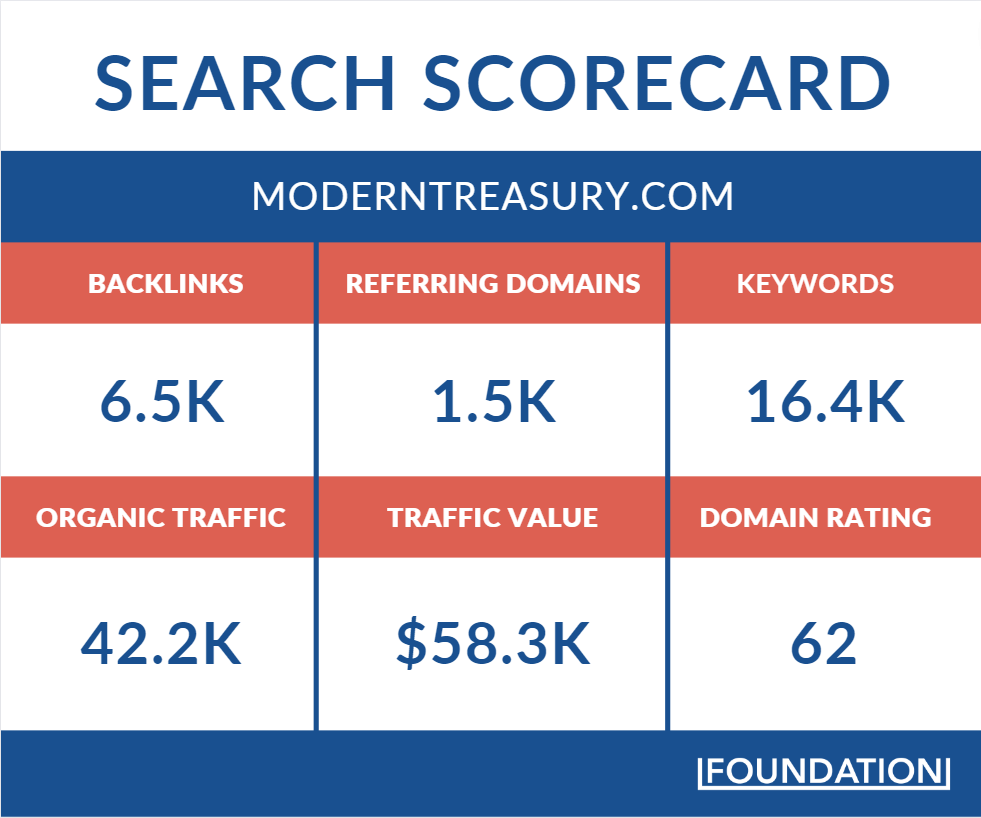
Modern Treasury is leading the traffic charge with posts from its “Learn” subfolder. Of the top 15 pages bringing organic traffic to its website, 13 of them are blog posts on high-level topics created to educate potential customers. These posts also have the added benefit of capturing some important SERP real estate that will only increase in value as more and more enterprises look for instant payment solutions.
Here are the top 10 posts from the /learn/ subfolder, the monthly traffic they generate, the estimated value of that traffic, and the position of each post in the SERPs:
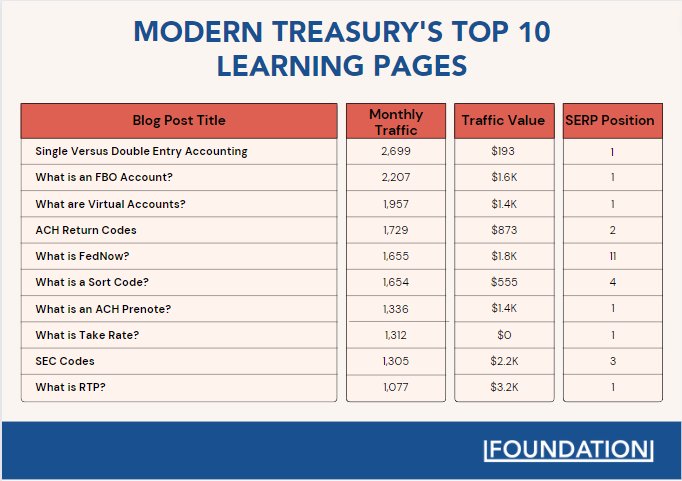
At nearly 17K organic visits every month, these 10 posts make up 40% of the traffic Modern Treasury brings in each month.
Plus, the majority of these pieces are also top-of-funnel — providing clear overviews of important financial services topics that establish Modern Treasury as an authority and propel enterprise decision-makers further down its sales funnel.
While the total traffic value of these posts may seem relatively low compared to some of the SaaS brands we usually analyze, the Modern Treasury marketing team is setting itself up for a major return on this content marketing investment down the road.
Remember: the industry is projecting a 16% CAGR until 2033, so capturing keywords and solidifying SERP position sets up Modern Treasury for a major increase in traffic, lead capture, and overall sales.
Now let’s take a look at some of the specific features of these blog posts that make them so effective at driving organic traffic.
1) Content Summaries to Kick-Off Each Post
As someone who regularly dives into new SaaS industries to learn more about product offerings and marketing approaches, I can tell you there’s nothing worse than misleading content. There’s only so much time in the day to get work done, and sorting through links in the Google SERPs or social platforms can take up a significant chunk of that time.
It’s frustrating, to say the least.
That’s why having a TL;DR section at the beginning of each post is important: it shows potential customers that you value and respect their time.
The Modern Treasury team makes sure every visitor that lands on their learning pages knows exactly what they are in for. Directly under the title, they place a high-level summary of the content topic, no need to scroll through a long-winded introduction or wall of text to find key info.
Here’s how it’s used on Modern Treasury’s top-ranking post:
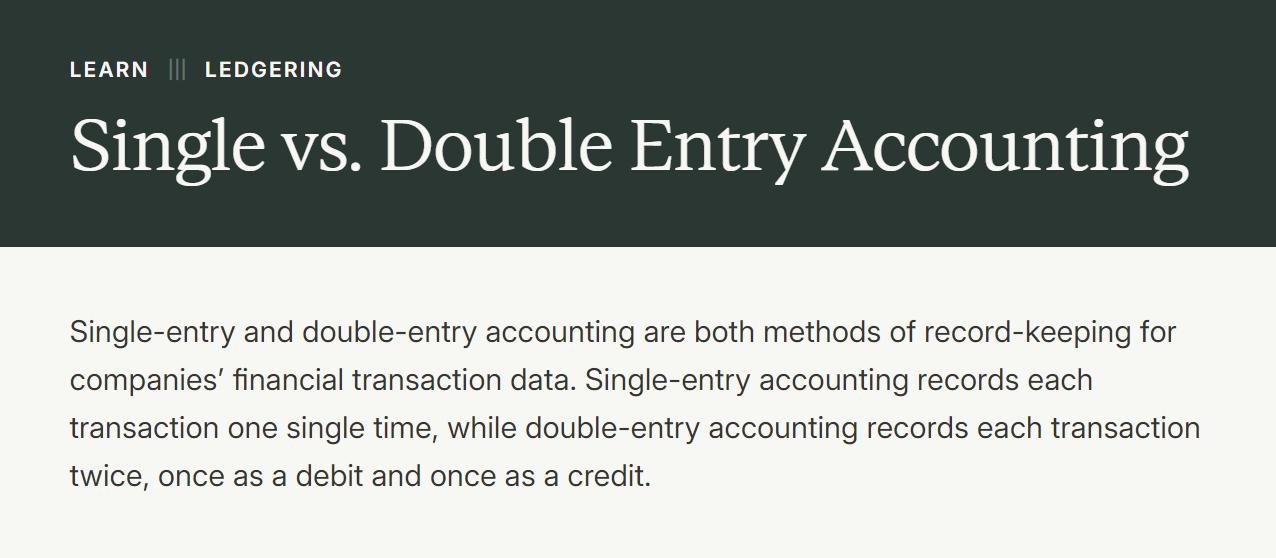
These summaries not only quickly convey finance concepts to visitors, but they also make it easier for search engines to find the content. Each TL;DR places plenty of primary, secondary, and related keywords right at the beginning of the blog post, meaning site crawlers quickly identify the context of the post. This is likely another reason why Modern Treasury is at the top of the SERPS for the long-tail keyword “difference between single entry and double entry accounting.
The takeaway? UX practices aren’t just for products — make sure your content is user- and search engine-friendly too.
2) Charts and Graphics to Solidify Understanding
SaaS is trending in the direction of multimedia content experiences, using embedded videos, memes, dynamic pages, and even free web tools to make pages more enticing to both users and web crawlers. It’s certainly a worthwhile investment and one that can help brands stand out in a crowded niche.
But sometimes a simple graphic is all you need.
Modern Treasury’s learning pages keep things simple on the visual content side. These posts are designed to inform its target audience about the fundamentals of payment services, there’s no need to complicate or distract with heavily-designed visuals or stock images.
Take a look at the chart below from Modern Treasury’s blog post on Real-Time Payments. It compares RTP with popular payment methods to outline the advantages and disadvantages of each:
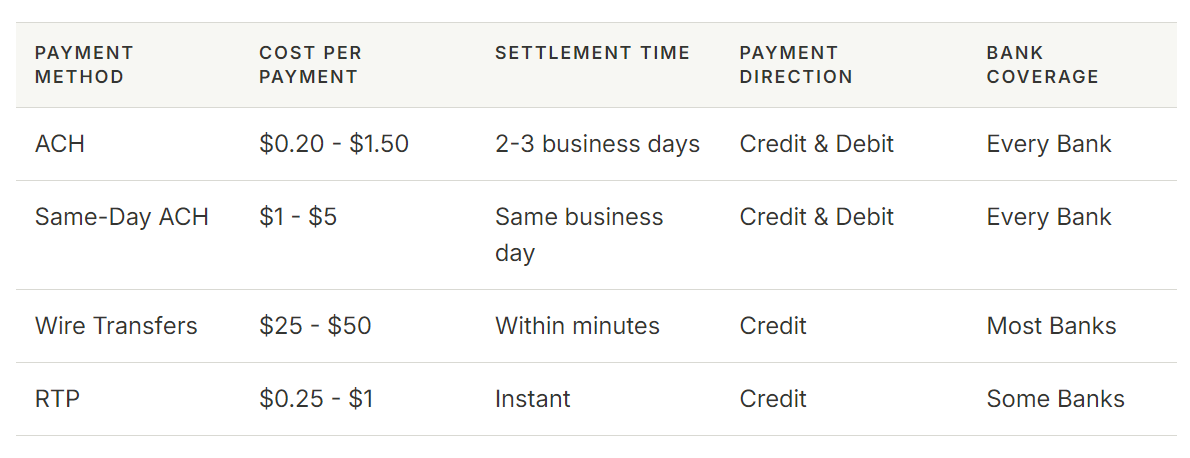
Concise, clear, and contextual information on the differences between the emerging instant payment rail and existing systems. It’s the only graphic on a short blog post that brings in over 1,100 visitors every month — at a value of $3.2K to boot.
While it’s always tempting to hop into tools like Canva or Adobe to produce truly stunning graphic content, remember that visual frills come after valuable information.
3) Internal Links to Mid-Funnel and Product Pages
Directing digital traffic to mid- and bottom-of-funnel web pages can be challenging in even the most established niches. For a nascent industry niche like instant payments, it’s even more difficult.
As a seasoned marketer, you already know there’s an easy solution for that: direct traffic from your higher volume TOFU pages to high-value product pages with internal links.
Instead of waiting for users to find their way to product pages for its payment platform or ledger offerings by searching for long-tail keywords, Modern Treasury simply funnels traffic along to them from the high-volume glossary-style pages.
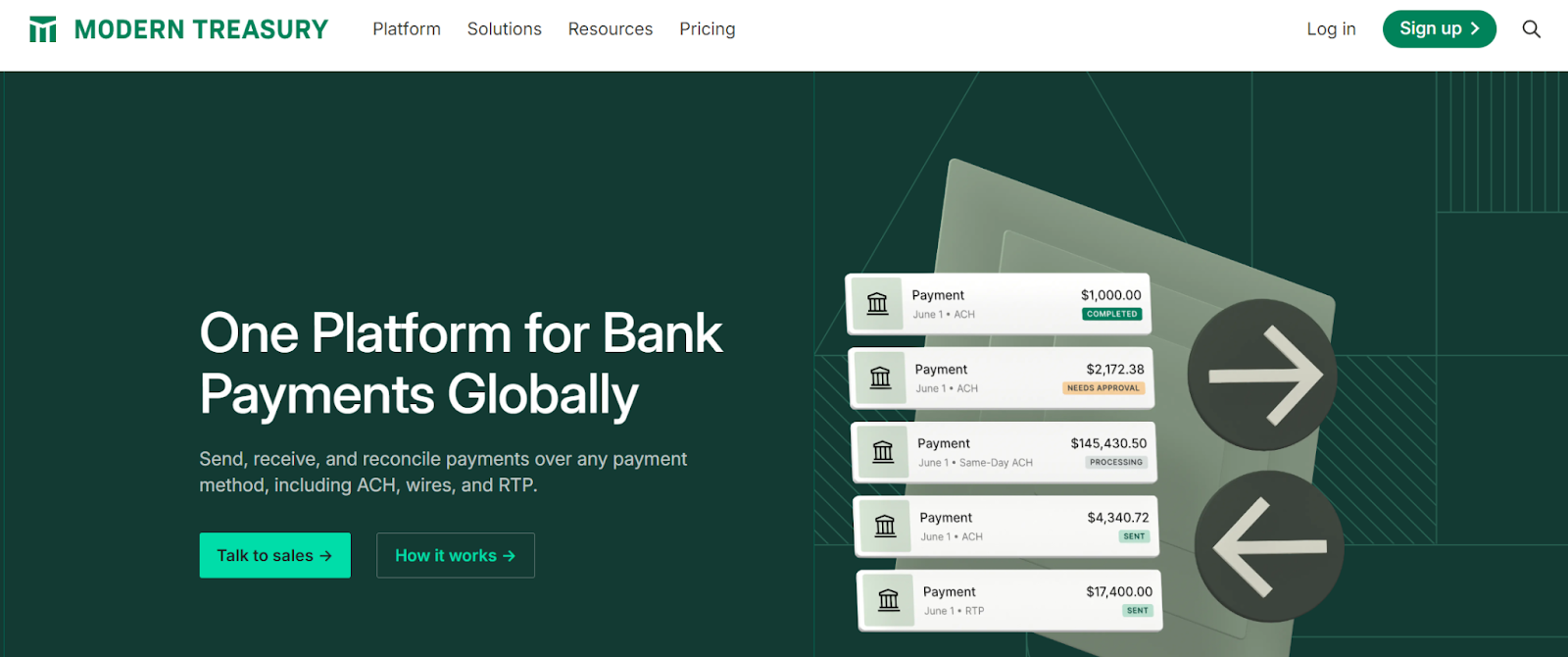
Modern Treasury has 4 key product offerings outlined on its site: Payments, Ledgers, Virtual Accounts, and Compliance. Collectively, these product pages bring in just 142 organic visits each month. That’s not going to cut it for a company looking to take over the instant payment operations space.
Thanks to those high-performing pages in the Learn subfolder, the 17K potential customers Modern Treasury brings in can still reach key product info through internal links. Each of the posts we looked at above has an internal link directing traffic to a mid-funnel or product page.
External backlinking strategies garner a lot of attention these days — make sure you don’t sleep on the internal side.
4) Top Cluster Footers to Help Readers Find Relevant Content
This is one of the more interesting tactics deployed by Modern Treasury’s marketing team, at least in my opinion. It also follows in line with the other three: keep things simple.
At the bottom of each learning section post, you find a table-of-contents-style module that lists all the other content that aligns with the core topic. It’s a visual representation of the SEO moat Modern Treasury builds around its product offerings.
For instance, here’s what you see at the bottom of the single- and double-entry accounting post we looked at earlier:
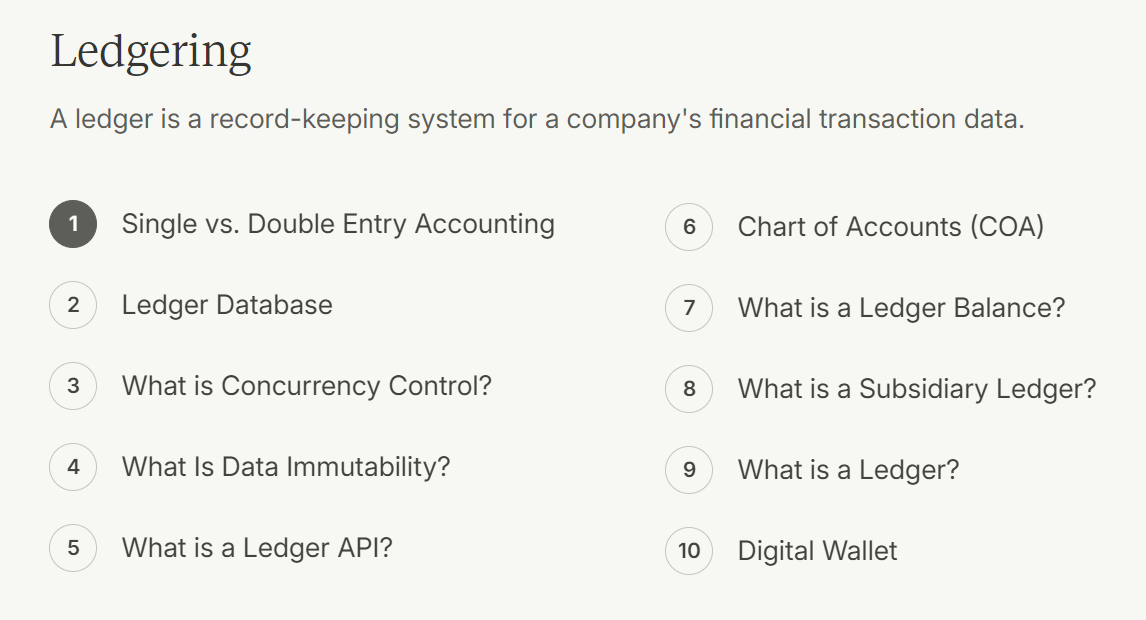
This isn’t a new strategy by any means. Brands like NerdWallet use topic clusters to great success. Cluster strategies not only help from an SEO perspective but a UX one as well.
After reading an article from the learn subfolder, readers get a visual representation of all the other content Modern Treasury has related to the topic. Visitors can then easily navigate to another page, increasing the amount of time they spend on the site and guiding them down the sales funnel.
Don’t Sleep on the Content Marketing Fundamentals
Blog posts, internal links, and simple images may not be as sexy to marketers as they once were, but these content marketing fundamentals are still very powerful. Just look at Modern Treasury.
The growing FinTech brand captures nearly half of its 42K monthly visitors by creating this exact type of high-quality, UX-friendly content. These blog posts don’t just inform but educate potential customers on high-level financial services topics, helping them establish their authority in the market. The effective use of summaries, graphics, internal links, and cluster footers helps Modern Treasury create user- and search-engine-friendly content that directs traffic to product pages and further down the sales funnel.
Modern Treasury is still a ways off from dominating the $28 billion instant payments market, but this long-form content strategy is helping it establish a strong foothold. Growing brands need to take note.







